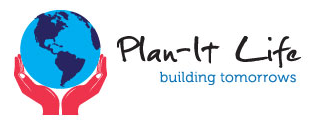Youth Learn About Cultures And How To Appreciate Differences And Similarities
In our world today, you feel and see the tension, hate, and fear of others as they go along their daily lives. On the news, in the paper, and in art, hate and lack of acceptance for different cultures, diversity, and inclusiveness. Our young people will be the adults of tomorrow. Some will continue spreading this poisonous attitude and actions if we do not show them another side, positive options.
Largely because of a concern for African-Americans, Latinos, Latinas, Asians, gays, Lesbians, and others, much interest has centered on culturally appropriate, culturally relevant, and/or culturally specific. The European-American culture often fails to engage the youth of color and gender-diverse youth.
Plan-It Life is working with our youth to develop cultural awareness with cultural sensitivity, hopefully resulting in a level of cultural competence. Gaining cultural competence is a long-term developmental process, engaging in exciting experiences, integrating beliefs/attitudes, and having interactive experiences that help to establish trust and communication. For example:
Beliefs/Attitudes
The culturally competent individual is:
- Aware of and sensitive to her/his own cultural heritage and respects and values different heritages;
- Aware of her/his values and biases and how they may affect the perception of other cultures;
- Comfortable with differences that exist between her/his culture and other cultures’ values and beliefs; and
- Sensitive to circumstances (personal biases, ethnic identity, political influence, etc.) that may require seeking assistance from a member of a different culture when interacting with another member of that culture.
Knowledge
The culturally competent individual must:
- Have a good understanding of the power structure in society and how non-dominant groups are treated;
- Acquire specific knowledge and information about the particular group(s) she/he is working with and
- Be aware of institutional barriers that prevent members of disadvantaged groups from using organizational and societal resources.
Skills
The culturally competent individual can:
- Generate a wide variety of verbal and nonverbal responses when dealing with differences;
- Send and receive both verbal and nonverbal messages (body language) accurately and appropriately; and
- Exercise intervene appropriately, and advocate on behalf of people from different cultures.
General Description
When we are unable to do the above, we need to have the courage to identify and confront our personal resistance, anger, and especially our fears.
Important Cultural Components
The journey towards cultural competence includes gaining knowledge about important components of one’s own culture and the cultures you work with. Our youth will explore these important cultural components.
Language and Communication Style
Language and communication style refers to a wide variety of verbal and nonverbal patterns and behaviors, including social customs about who speaks to whom- both how and when.
Health Beliefs
Health beliefs cover a range of assumptions about the causes of disease and the proper remedies for illness.
Family Relationships
The family is the primary unit of society. In it, children are socialized into human society and into a culture’s particular beliefs, attitudes, values, and behaviors. The topic of family relationships includes family structure, roles, dynamics, and expectations.
Sexuality
Sexuality involves more than genital sexual activity. It includes five major areas: sexual intimacy, sexual identity, reproduction/sexual health, and sexualization.
Gender Roles
Gender roles refer to what is considered appropriate and acceptable behavior for men and women. There has been tremendous change in the U.S. in the last twenty years, and doors have been opened to women in education and occupation. However, there are still many deeply held beliefs about which behaviors are feminine and which are masculine.
Religious Beliefs
Religion refers to a specific set of beliefs and practices regarding the spiritual realm beyond the visible world, including belief in the existence of a single being or group of beings who created and governs the world. Rituals, prayer, and other spiritual exercises are commonly part of religious practice.
Level of Acculturation
Acculturation is a process that occurs when two separate cultural groups come in contact with each other and change occurs in at least one of the two groups. While most changes are thought to occur only in immigrant groups in the U.S., the dominant (mainstream) culture in the U.S. has undergone change as a result of contact with “other” cultures.
Racism
The impact of racism in the U.S. has been devastating and far-reaching, and it continues today. A blunt discussion of racism and an understanding of its effects on individuals and communities is essential for building cultural competence.
Resources
- Food
- Water
- Health care
- Education
- Sports
- Music
- Games
- Animals
- Respect
- Discipline
- Training, life skills
- Independence
- Decision making
Poverty and Economic Concerns
Poverty and economic concerns are tied to racism in this country. There is no use discussing racial issues without examining the impact of poverty on communities of color in the U.S.
History of Oppression
The history of the United States includes many chapters in which government policies harmful to racial and ethnic groups were in force. Knowing this history is important, as the legacy of these laws and policies lingers today.
Employment
Availability and independence
Options
Bias, opportunity
The Plan-It Life cultural/educational program will explore these options in an interactive way utilizing food, movies, music, activities, etc. The youth will explore and participate in various activities as they travel virtually from one country to another. Each youth will have a passport that will be stamped as they finish the study of the identified culture. It is our hope to break down barriers and develop respect and inclusivity for all!








